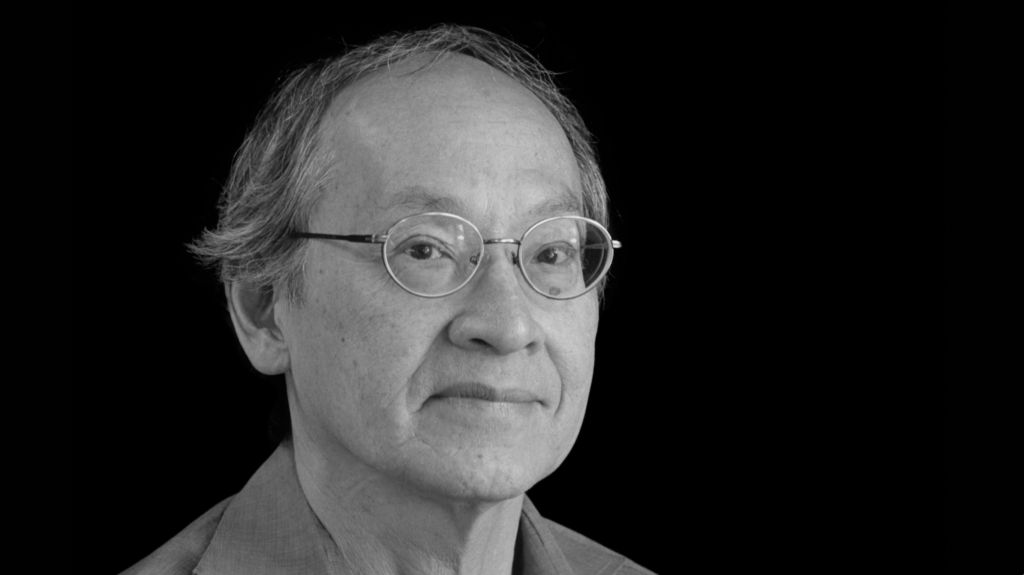National Book Award-winning poet and translator Arthur Sze visited Georgetown’s campus for a poetry reading on Sept. 19.
The reading was hosted by the Lannan Center for Poetics and Social Practice, a center dedicated to engaging the Georgetown community in the literary arts, as part of its Readings and Talks Series. Professor Duncan Wu, the Raymond Wagner Professor in Literary Studies at Georgetown, moderated the reading, which was followed by a reception and book signing.
In his introduction of Sze, Wu praised the poet’s unique voice and intellect.
“When you read his poetry, you’re looking at the long-range results of Dante’s invention of the spiritual mode inverse, overlaid by Sze’s own hypersensitive vision, and it’s that that confirms him as one of the most sophisticated American poets of our time,” Wu said at the event. “A reading of his work amounts to a reeducation in ways of seeing.”
Sze has published 11 poetry collections, including his tenth collection Sight Lines (2019) that won the National Book Award. Another collection, Compass Rose (2014), was a finalist for the 2015 Pulitzer Prize for Poetry. Over the course of his writing career, he has received many other awards, including a Guggenheim Fellowship, a Lannan Literary Award for Poetry and the Jackson Poetry Prize from Poets & Writers.
At the reading, Sze shared excerpts from his most recent collection, The Glass Constellation: New and Collected Poems (2021), as well as some new poems. He also provided a brief background for each one.
Sze said he never has a particular form in mind when writing a poem, despite often experimenting with poetic forms.
“If I think of a form, that’s usually disastrous. That’s like tying a ribbon, or it’s like preconceiving. I need to make a mess of things. I need to play with a language — with a phrasing. And then, it sort of grows, and at a certain point, I start refining or compressing, and then, certain patterns start to emerge. Then, I might think that this has a pattern that’s appropriate,” Sze said at the event. “But it’s very rare for that to happen.”
Sze said his poem “Sight Lines,” in particular, has variations on poetic form.
“The poem is an invented form that I like to call a ‘cascade,’” Sze said at the event. “Instead of starting each line with, say, the same word like I did in ‘Anvil’ at the beginning of the reading, what I gave myself as a kind of challenge or experiment in repetition and rhythm and musicality was a structure where each line picks up a word or words from the previous line. That includes the title.”

Sze was also the first poet laureate of Santa Fe, N.M., where he currently works as a professor emeritus at the Institute of American Indian Arts.
Sze said living in Santa Fe has greatly influenced his poetic content and imagery.
“A lot of that landscape of high desert country is in my poetry,” Sze said. “As beautiful as that landscape is — there is Los Alamos to the northwest, the birthplace of the atom bomb, and I’m always meeting scientists and technicians who work there.”
Several of Sze’s poems are set in and around Santa Fe, like “Acequia del Llano,” which he read aloud and discussed at the event.
“Where I live, we’re part of a safety ditch association, and the ditch runs basically April 15 to October 15. We draw water off of it, and the poem will explain all you need to know about our irrigation system,” Sze said.
Sze also described how he played with the form of this poem to symbolize Santa Fe’s irrigation system.
“Formally, instead of prose and then a haiku, prose and then a haiku, I varied it — where it’s prose and then a haiku, prose and then two seven-syllable lines,” Sze said. “I like working against expectation, and I never rarely write with syllable count.”
Sze said none of his poems, including those collected within “The Glass Constellation,” are officially “finished.”
“In my 20s, I would have a kind of euphoria when I finished a piece — this is wonderful, and I can’t wait to show it to someone,” Sze said at the event. “Those usually turned out to be terrible, and that sense of euphoria was very short-lived.”
“You have, over time, that sense of experience where you have to learn to just let it be, and you might come back to it later. But at a particular stage, you just are exhausted — or I am,” Sze added. “I’ve come to learn that’s probably a pretty good sign because I’ve given everything I can, and then, I’m too close to it.”





















